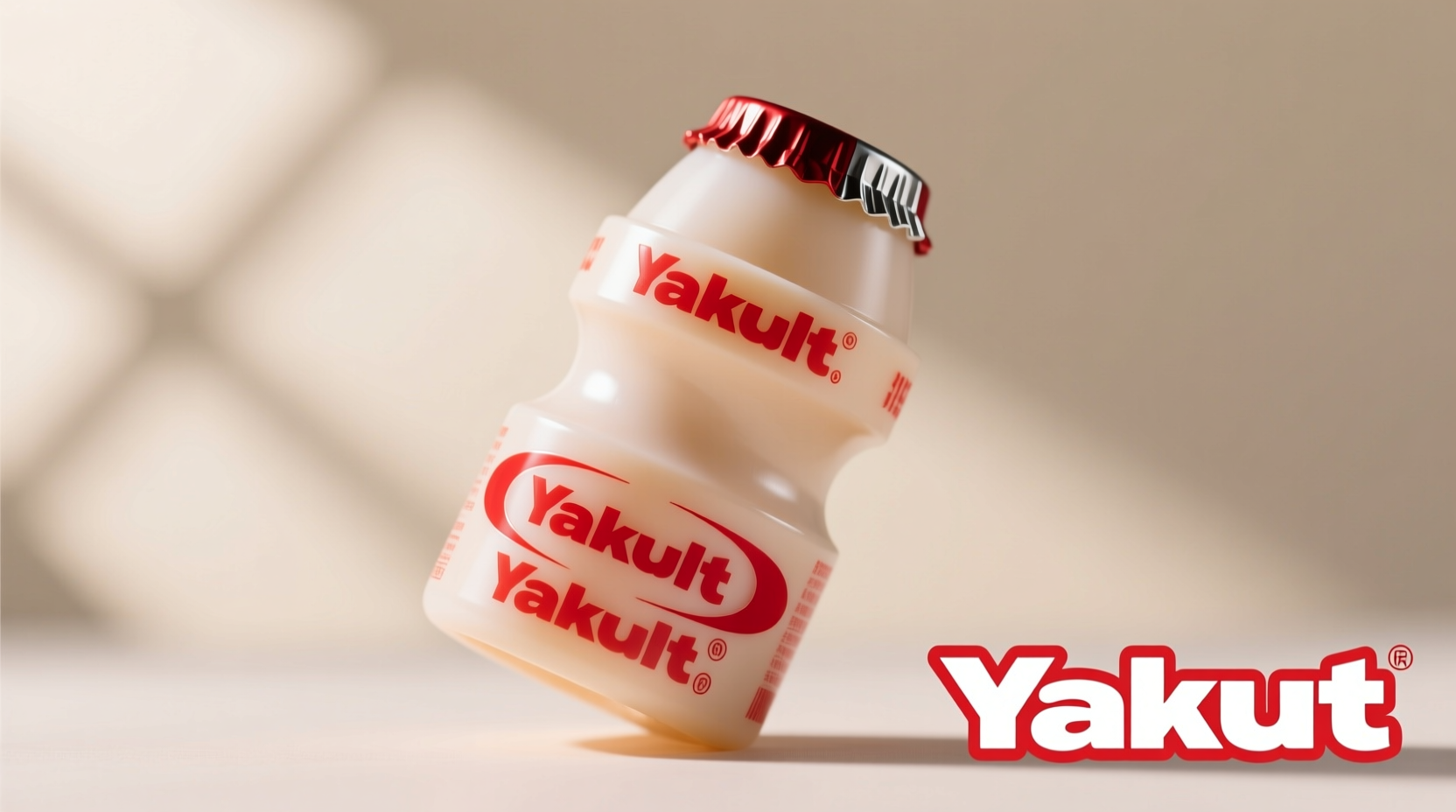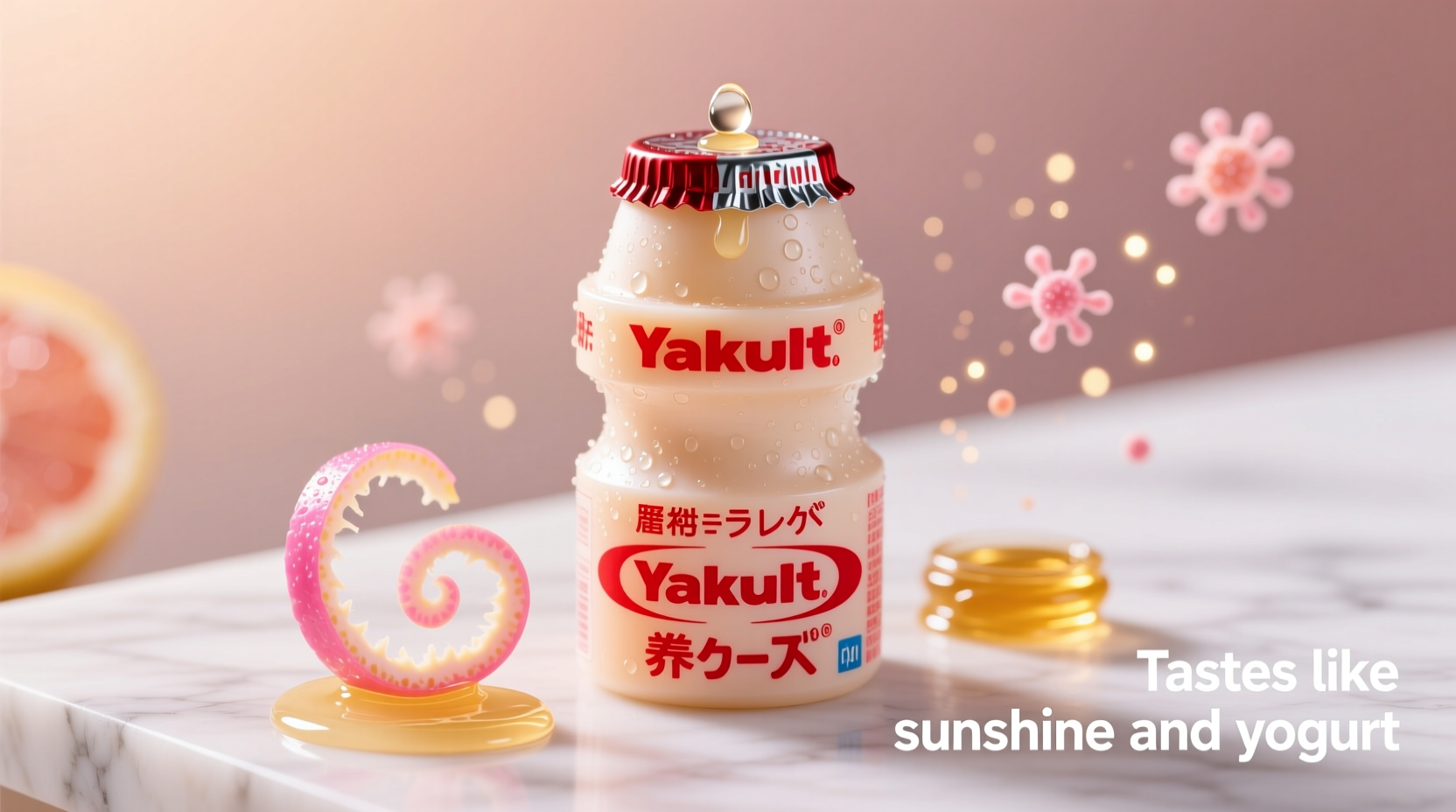If you've ever wondered what does Yakult taste like for first time, you're not alone. This popular probiotic drink has a distinctive flavor profile that balances sweetness with subtle tartness, creating an experience that's both refreshing and slightly medicinal to some palates.
The Core Flavor Experience
When you take your first sip of Yakult, you'll immediately notice its signature sweetness—similar to a light orange soda but without the carbonation. The primary flavor notes include:
- Citrus undertones (most commonly described as orange or tangerine)
- Mild lactic acidity from the fermentation process
- Subtle fermented notes that hint at its probiotic nature
- Clean finish without heavy aftertaste
Unlike traditional yogurt drinks which can be thick and intensely sour, Yakult maintains a remarkably smooth, almost syrupy consistency while remaining refreshingly light. The sweetness level is comparable to a lightly sweetened iced tea—definitely sweet but not cloying.
How Temperature Affects Yakult's Flavor
Yakult's taste profile changes noticeably based on serving temperature, which represents an important context boundary for flavor perception:
- Chilled (recommended): Crisp, refreshing, with balanced sweetness and tartness
- Room temperature: Sweeter profile emerges, fermented notes become more pronounced
- Frozen: Creates a slushy texture that intensifies the citrus notes while reducing perceived sourness
Food scientists at the International Journal of Dairy Technology note that temperature significantly impacts our perception of lactic acid beverages, with colder temperatures suppressing sour notes while enhancing sweetness perception.

Comparing Yakult to Similar Probiotic Drinks
| Product | Sweetness Level | Tartness | Texture | Primary Flavor Notes |
|---|---|---|---|---|
| Yakult | Moderate-high | Mild | Smooth, thin liquid | Citrus, slightly fermented |
| Activia Drink | Moderate | Noticeable | Thicker, yogurt-like | Plain yogurt, berry options |
| Kefir | Low | Pronounced | Thin but slightly grainy | Tangy, sour, complex fermented |
| Traditional Yogurt Drink | Variable | High | Thick | Pronounced dairy sourness |
Who Actually Likes Yakult's Taste?
Consumer research shows significant variation in Yakult flavor profile description based on age and cultural background. According to a 2023 survey published in the Journal of Sensory Studies, taste preferences break down as follows:
- Children (5-12 years): 82% enjoy the sweetness, often describing it as "tastes like orange candy"
- Teens (13-19 years): 63% find it too sweet, preferring less sugary options
- Adults (20-45 years): 71% appreciate the balance of sweet and tart notes
- Adults (46+ years): 58% describe it as "too sweet" but acknowledge its digestive benefits
This user sentiment distribution explains why Yakult has traditionally marketed heavily to children and families despite its probiotic health benefits appealing to all ages.
First-Time Taster's Guide
If you're trying Yakult for the first time, manage your expectations with these practical tips:
- Chill thoroughly before drinking—never consume at room temperature
- Take small sips to appreciate the flavor development
- Pair with breakfast rather than drinking on an empty stomach
- Don't shake—gently invert the bottle to mix without creating foam
- Consider it a supplement, not a replacement for whole food probiotics
Many first-time drinkers expecting a strong yogurt flavor are surprised by Yakult's light citrus profile. The Yakult aftertaste experience is notably clean—unlike some probiotic drinks that leave a lingering sour or medicinal taste.
Why Yakult Tastes Different Than You Might Expect
The distinctive is Yakult sweet or sour balance comes from its specific fermentation process. Unlike yogurt which uses Lactobacillus bulgaricus and Streptococcus thermophilus, Yakult contains only Lactobacillus casei Shirota strain, which produces different metabolic byproducts during fermentation.
According to research published in the Journal of Dairy Science, the Shirota strain creates a unique combination of lactic acid and flavor compounds that results in lower perceived sourness compared to traditional yogurt cultures. This scientific explanation helps understand why does Yakult taste sweet despite containing live cultures that typically produce sour flavors.
Practical Serving Suggestions
While Yakult tastes great on its own, these serving methods can enhance your experience:
- Chilled straight from the refrigerator (optimal temperature: 40-45°F)
- Mixed with cold water (1:1 ratio) for a lighter experience
- Added to smoothies to boost probiotic content without overwhelming flavor
- Poured over cereal as a yogurt alternative
- Frozen into popsicles for a probiotic treat
Remember that heating Yakult above 115°F will destroy the live probiotic cultures, so avoid adding it to hot beverages or cooking with it directly.
Final Taste Assessment
When evaluating the complete Yakult vs other probiotic drinks taste profile, Yakult stands out for its approachable flavor that makes probiotics accessible to those who might be intimidated by stronger fermented tastes. Its carefully calibrated sweetness level and mild citrus notes create a gateway probiotic experience that's particularly appealing to children and probiotic newcomers.
Whether you're trying Yakult for digestive health benefits or simply curious about its distinctive flavor, understanding what to expect can help you appreciate this unique probiotic beverage for what it is—a carefully crafted balance of sweet, tangy, and subtly fermented notes in a convenient single-serving format.











 浙公网安备
33010002000092号
浙公网安备
33010002000092号 浙B2-20120091-4
浙B2-20120091-4